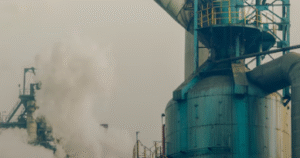$X $STLD $NUE
#Trump #SteelIndustry #TradePolicy #CommoditiesMarket #USCanadaRelations #Tariffs #Protectionism #Election #SteelStocks #Manufacturing #Infrastructure #MarketReactions
The U.S. election results have sent ripples across various industries, but few sectors stand to benefit as directly as the domestic steel industry. With Donald Trump’s victory, analysts foresee a positive environment for U.S. steel producers. Throughout his campaign, Trump emphasized his commitment to revamping America’s manufacturing sectors, particularly steel, by imposing tariffs and promoting domestic production. This policy approach has sparked optimism in the steel market, as many expect that a more protectionist stance will bring a surge in demand for U.S.-made steel while curbing imports.
Steel companies like United States Steel Corporation ($X), Steel Dynamics Inc. ($STLD), and Nucor Corporation ($NUE) could particularly benefit as expectations of infrastructure projects, ranging from roads to bridges, intensify. Trump has repeatedly promised large investments in infrastructure, which will likely drive demand for materials like steel, reinforcing stock prices for these companies. Equity market analysts are already projecting that steel stocks could rally as a result of these policies. However, while the short-term outlook is bullish, some skepticism over the long-term consequences remains, especially concerning potential volatility in commodity prices and how markets will react to protectionist trade measures.
On the other side of the trade equation, Trump’s policies could pose significant challenges for Canada, whose economy is closely tied to the U.S. through trade. As the second-largest exporter of steel to the United States, Canada may face difficulties in maintaining this critical relationship if trade barriers, especially steel tariffs, resurface. Any imposition of punitive tariffs could disrupt the flow of goods, harm the Canadian steel industry, and weaken broader cross-border economic ties. Even beyond steel, sectors heavily reliant on raw materials crossing the U.S.-Canada border could suffer. The Canadian dollar could face increased volatility and depreciation during periods of trade tension, adding another layer of complexity to the economic dynamic between the two nations.
Thus, while U.S. steel manufacturers anticipate a potential windfall amid heightened investment in American steel production, Canada’s exposure to the U.S. market positions it at considerable risk. The ongoing balancing act between protectionist policies and international trade relationships will be crucial for both countries moving forward. Investors should watch closely for future developments related to tariffs, particularly on raw materials such as steel, which will not only influence market movements but also have ripple effects across multiple industries and trade-dependent economies.







Comments are closed.